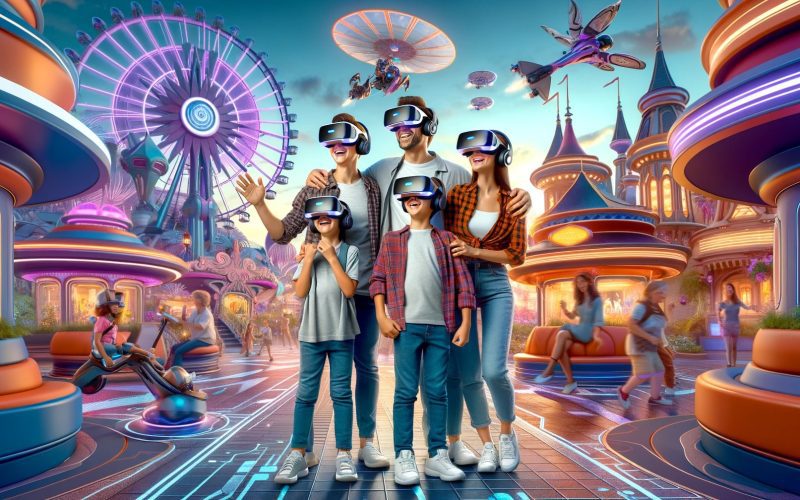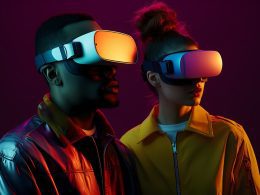Introduction
The landscape of theme parks is evolving at a rapid pace, driven by technological advancements and the ever-growing demand for immersive experiences. The future of theme parks lies at the intersection of cutting-edge technology and compelling storytelling, promising to redefine the way we experience entertainment. This article delves into the transformative trends shaping the future of theme parks, exploring the integration of technology and storytelling to create unparalleled visitor experiences.
The Evolution of Theme Parks
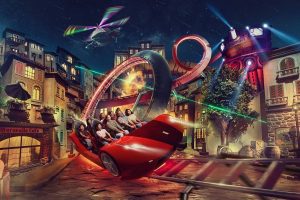
-
A Brief History
Theme parks have come a long way since their inception in the early 20th century. From the opening of the first modern theme park, Disneyland, in 1955, to the sprawling entertainment complexes of today, the industry has continually adapted to changing tastes and technological advancements. Early parks relied heavily on mechanical rides and simple animatronics, but the focus has shifted towards creating immersive environments that transport visitors into different worlds.
-
Current Trends
Today, theme parks are leveraging a variety of technologies to enhance the guest experience. Virtual reality (VR), augmented reality (AR), and advanced animatronics are just a few of the tools being used to create more engaging and interactive attractions. Additionally, the rise of intellectual property (IP)-based attractions, such as those themed around popular movies and TV shows, has further fueled the demand for immersive storytelling.
The Role of Technology in the Future of Theme Parks
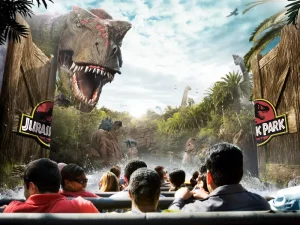
-
Virtual Reality (VR) and Augmented Reality (AR)
VR and AR technologies are set to play a crucial role in the future of theme parks. These technologies can create entirely new worlds or augment existing environments, providing guests with unique and personalized experiences. For instance, VR can transport visitors to distant planets or historical eras, while AR can overlay digital elements onto the physical world, enhancing the storytelling experience.
-
Case Study: VR Coasters
Several theme parks have already begun integrating VR into their roller coasters. Riders wear VR headsets that synchronize with the coaster’s movements, creating the illusion of flying through space or battling dragons. This combination of physical thrills and digital storytelling offers a glimpse into the future of theme park attractions.
-
Artificial Intelligence (AI) and Machine Learning
AI and machine learning are revolutionizing the way theme parks operate and interact with guests. These technologies can analyze visitor data to personalize experiences, optimize ride operations, and even predict maintenance needs. AI-driven animatronics and characters can also engage with guests in real-time, creating more dynamic and interactive storytelling.
Case Study: Personalized Experiences
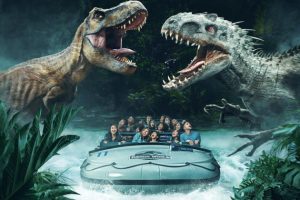
Imagine a theme park where every visitor’s experience is tailored to their preferences. AI can analyze data from wearable devices, mobile apps, and social media to create personalized itineraries, recommend attractions, and even adjust ride experiences in real-time. This level of personalization can enhance guest satisfaction and create a more memorable visit.
-
Advanced Animatronics and Robotics
Animatronics and robotics have come a long way since their early days. Modern animatronics are capable of lifelike movements and expressions, making them integral to immersive storytelling. These advanced robots can interact with guests, respond to their actions, and even learn from their behavior, creating a more engaging and dynamic experience.
Case Study: Interactive Characters
Disney’s “Star Wars: Galaxy’s Edge” features advanced animatronics that bring beloved characters to life. These characters can interact with guests, respond to their actions, and even remember previous encounters. This level of interactivity enhances the storytelling experience and makes guests feel like they are part of the story.
-
Projection Mapping and Holography
Projection mapping and holography are transforming the way stories are told in theme parks. These technologies can create stunning visual effects, turning ordinary surfaces into dynamic canvases for storytelling. Projection mapping can be used to create immersive environments, while holography can bring characters and scenes to life in three dimensions.
Case Study: Nighttime Spectaculars
Many theme parks now feature nighttime shows that use projection mapping to transform buildings, landscapes, and even water into dynamic storytelling canvases. These shows combine music, fireworks, and projection effects to create a multi-sensory experience that leaves a lasting impression on guests.
The Power of Storytelling in Theme Parks
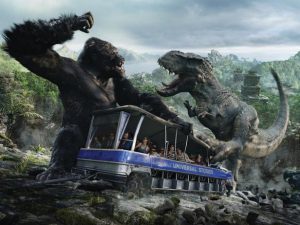
-
The Importance of Narrative
At the heart of every great theme park experience is a compelling story. Storytelling is what transforms a collection of rides and attractions into an immersive world that guests can explore and interact with. A well-crafted narrative can create emotional connections, drive engagement, and make the experience more memorable.
-
Integrating Storytelling and Technology
The future of theme parks lies in the seamless integration of storytelling and technology. By using technology to enhance and support the narrative, theme parks can create more immersive and engaging experiences. This integration can take many forms, from interactive attractions and personalized experiences to dynamic environments and real-time storytelling.
-
Case Study: Themed Lands
Many modern theme parks feature themed lands that transport guests to different worlds. These lands are meticulously designed to create a cohesive narrative, with attractions, shows, and even food and merchandise all contributing to the story. Technology plays a crucial role in bringing these stories to life, from advanced animatronics and interactive elements to immersive environments and personalized experiences.
The Future of Theme Park Design
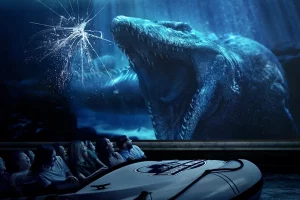
-
Immersive Environments
The future of theme park design is all about creating immersive environments that transport guests to different worlds. This involves not only the design of the physical space but also the integration of technology and storytelling to create a cohesive and engaging experience. From the moment guests enter the park, they should feel like they are stepping into a different world.
-
Interactive and Personalized Experiences
As technology continues to advance, theme parks will be able to offer more interactive and personalized experiences. Guests will be able to interact with characters and environments in real-time, with their actions and choices influencing the story. AI and machine learning will play a crucial role in creating these personalized experiences, analyzing data to tailor the experience to each guest’s preferences and behavior.
-
Sustainable and Smart Design
Sustainability and smart design will also play a crucial role in the future of theme parks. As the industry continues to grow, there is an increasing focus on minimizing environmental impact and creating more sustainable operations. This includes everything from energy-efficient buildings and renewable energy sources to waste reduction and water conservation.
Conclusion
The future of theme parks is bright, with technology and storytelling set to transform the industry in exciting and innovative ways. By leveraging cutting-edge technologies like VR, AR, AI, and advanced animatronics, theme parks can create more immersive, interactive, and personalized experiences. At the same time, compelling storytelling will continue to be at the heart of these experiences, creating emotional connections and making the experience more memorable.
As we look to the future, it’s clear that the integration of technology and storytelling will play a crucial role in shaping the next generation of theme parks. This exciting evolution promises to create unforgettable experiences that transport guests to different worlds, engage their senses, and leave a lasting impression. The future of theme parks is not just about rides and attractions, but about creating immersive and engaging experiences that tell a story and connect with guests on a deeper level.






